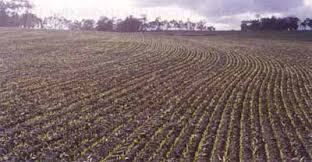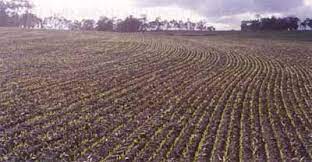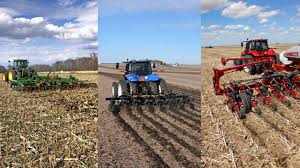In this article, we will be discussing about tillage operations, its purposes, types, when and how deep it should be carried out, and the implements that would be needed to carry out the operations.
The adverse effect of frequent tillage on the soil and environment is treated so that you would have a better appreciation of the need for sustainable crop production practices.
Definition of Tillage
Tillage is defined as changing the soil condition with a tool for the benefit of man. After the land has been cleared and plant debris removed, it is often necessary to subject it to some form of tillage before the crop is planted. Various forms of tillage may be carried out while the crop is growing on the field.
Purposes of Tillage
Tillage is carried out for one or a combination of the following reasons:
Seed bed preparation;
Control of weeds;
Incorporation of organic matter into the soil;
Soil and water conservation;
Improvement of the soil’s physical condition.
1. Seed bed preparation
Tillage loosens the soil and results in a seed bed suitable for seed germination and development of the young seedlings.
A good seed bed should be moist and should not contain large lumps of soil that may prevent close contact between the planted seed and soil particle. It should not contain large quantities of un-decomposed organic matter.
2. Control of weeds
Often weeds growing on a fallow plot can be controlled by being ploughed under. Ploughing prior to cropping may also serve to kill the weeds present. Tillage between rows of growing crop can be an important method of weed control.
3. Incorporation of organic matter in to the soil
Organic matter and crop residues can be incorporated into the soil through tillage. Once in the soil, they decomposed rapidly thus releasing the nutrients they contain to the growing plants.
The incorporation of plant residues in the soil through tillage also serve to improved soil structure.
4. Soil and water conservation
Tillage often serves the purpose of breaking up the surface layers of the soil so that water is able to infiltrate more rapidly into the soil. This has the dual benefit of increasing the amount of water available in the soil for the crops and decreasing the amount of soil erosion caused by excessive run-off.
For these reasons, land that is not to be cropped immediately may even be occasionally ploughed or tilled as a soil and water conservation measure.
5. Improvement of the soil’s physical condition
The physical condition of the soil can be improved by tillage. For example, where the surface layers of the soil have formed a hardpan, it may be beneficial to break up the hardpan through tillage so that plants roots can penetrate more deeply and water could percolate into the lower layers of soil more easily.
6. Increases soil aeration
Tillage opens up the soil, thus improving soil aeration which increases the oxidation of chemical compounds in the soil and make them more soluble and available for the plants roots to absorb. Improved aeration is also beneficial to soil inhabiting organism.
Historical Development of Tillage

Tillage began before the earliest written records of mankind. Primitive man uses hand tools made of wood, bone or stone as implements to chop or dig the soil. These simple hand tools were used to destroy the natural vegetation, and reduce competition from native plants and weeds growing among the crops.
The next stage of tillage development was the application of power of domestic animals, which occurred in parts of the world before the dawn of history. This made possible development of implement with a steady forward movement.
Among these were the crooked-stick plow to stir the soil and the brush drag to pulverise the surface soil. Little further progress was made for many centuries except that eventually some plows were fitted with iron shares.
The development of steel in the 19th century resulted in a plow with sharp edges that can cut the soil layer and in a curved polished surface that permitted the plow to scour.
The straight line movement of the plow has since been supplemented with rotary movement in such implements as disk plows, harrows, the rotary hoe and various pulverising and stirring tools.
Read Also : Functions of Fertilizer Nutrients in the Soil and Plants
Types of Tillage

- Ploughing;
- Harrowing;
- Mounding;
- Ridging;
- Bed making;
- Intertillage;
- Grading and terracing .
- Minimum tillage.
1. Ploughing
This is one of the most ancient and most universal forms of tillage. A shear, which is pulled along by some power device, slices its way under the soil as it goes along, thereby loosening the soil and turning it over.
The soil is left in lumps of various sizes and may require other operations in order to make a suitable seed bed.
Implements used for Ploughing
Moldboard plough, Disc plough.
2. Harrowing
Planting may be done on the field after ploughing, but if the lumps of soil left after ploughing are too large, they must be broken up before planting.
The conventional way of breaking up soil lumps is through harrowing. There are various kinds of animal-powered and tractor- powered harrows but they all function by breaking up the lumps of soil and leaving an even soil surface.
Read Also : Best Agricultural Tillage Practices
3. Mounding
This involves the collection of the soil into more or less conical heaps or mounds. The mounds usually vary in height from 30-100cm, but are usually of approximately the same height on a particular farm.
The distance from one mound to the next also varies but it is the distance that determines how much cropping can occur in the lower-lying spaces between the mounds.
Mounding is the most common form of soil collection tillage and is often associated with intercropping since it simultaneously permits two or more kinds of seed bed on the field; the top of the mounds is used for crops such as tubers which requires a deep layer of loose soil, the low-lying furrows are used for crops that have high requirement for water such as rice while the slopes of the mounds are used for intermediate crops.
Advantages of mounding
Providing a deep, loose seed bed which is particularly suitable for the development of roots and tubers.
Providing a variety of seed bed types on the same field, which may be advantageous to intercropping.
Elevating the seed bed and plant roots above the water table in fields with a high water table.
Mounding improves aeration for roots and facilitates the growth and development of underground tuber and root crops and the pods of groundnuts.
Mounding makes harvesting of tuber crops and pods of groundnuts easier.
Disadvantages of mounding
The major disadvantage of mounding is that it has not been mechanized and would probably be extremely difficult to mechanized.
Mounds impede the free movement of men and machinery through the field. For these reasons, mounding is mostly confined to traditional agriculture (with intercropping) to which it is well suited.
4. Ridging
This involves the collection of soil into elongated heaps called ridges. The distance between the ridges is variable, but is usually about one meter. Growing crops on ridges is quite common in some parts of the world.
In the traditional settings, hoes and human labour are used to make ridges, but mechanical ridgers are also available and permit large areas to be ridged in a relatively short time.
Advantages
Ridging have the same advantages as mounding, but in addition ridging is an extremely useful measure for controlling erosion, particularly on sloping land. In such cases, ridging is done along the contour so that the flow of water down the slope is impeded.
The water then flows along the furrows between the ridges. In order to further discourage the rapid flow of water within the furrows, cross ridges (also called cross bunds or tie ridges) are made across the furrows at intervals to connect one ridge to the next.
Thus, ridging, when properly done, can decrease surface run-off, thereby reducing soil erosion and promoting water infiltration into the soil.
Since it has been completely mechanized, ridging finds a place in modern agriculture, where it is the most common form of soil collection tillage.
5. Bed making
This is a form of land preparation which is more often discovered in horticultural and nursery practices than in field crop production. A bed is like a ridge in that it is elongated raised portion of the field.
It is, however, usually much broader than a ridge, its top is flat and its length is usually not more than 20 m. Bed making is most commonly done with hand tools.
6. Inter-tillage
Inter-tillage is commonly practiced with respect to crops that are planted in rows. It involves tilling the areas between the crop rows.
Its objectives are usually to control the weeds between the crop rows and to promote water percolation into the soil.
7. Grading and terracing
These are two land preparation operations which aim at effecting changes in the gross topography of the field. Grading is most commonly done where it is desired to use furrow or some other form of surface irrigation.
The land is graded in such a way that the point of water supply is the highest on the field and the field slopes downwards from the water source.
Grading of the crop field is also encouraged where the farmer intends to impound water for the flooding culture of rice or taro.
If the land is sloping, it is graded to be relatively level. Elevated areas or dykes are constructed around the field so that the water does not flow away once impounded.
Terracing is one of the methods of managing extremely sloping land for crop production. It creates a series of relatively flat horizontal portions alternating with vertical portions very similar to a flight of stairs.
The flat portions are used for cropping. Terracing provides erosion control measures and permit cropping on land that would have otherwise remain useless for cropping,
8. Minimum tillage
There has been a realisation in recent years that frequent tillage operations tend to impair the soil structure thus exposes the soil to adverse effect of rainfall and strong wind.
These observations have led many scientists to develop the concept of minimum tillage. This means that crop production could be carried out with as little tillage or soil disturbance as possible as tillage is seen as a necessary evil which should only be sparingly indulged in.
Advantages of minimum tillage
– Preserve the soil structure
– It is economical, since the labour and cost normally incurred in tillage operations can be saved.
Read Also : Ways To Generate Income From Dog Wastes

